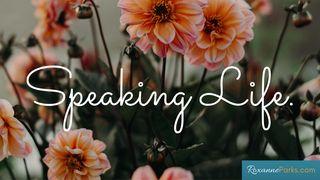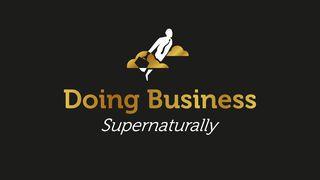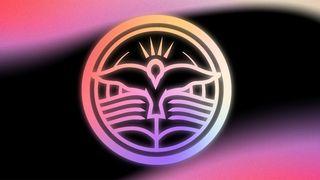Seeing Disabilities Through God's Eyes: A 5-Day Devotional With Sandra PeoplesSýnishorn

God's plan for those with disabilities
We will start at the beginning as we build our theology of disability. It starts with our theology of man, which, of course, begins at creation.
Then God said, “Let us make man in our image, after our likeness. And let them have dominion over the fish of the sea and over the birds of the heavens and over the livestock and over all the earth and over every creeping thing that creeps on the earth.” So God created man in his own image, in the image of God he created him; male and female he created them. (Genesis 1:26-27, ESV)
Man was created by God and in the image of God. Being created in the image of God sets humans apart from everything else God created. But what it means to be created in the image of God has been discussed for centuries and has not always been agreed upon. Even though we can't fully know, what we do understand about the image of God has implications for how we view and treat others, especially those with disabilities. We don't want to reduce God's image to only the roles we play or the capacities we have.
Although the image of God can include functions and characteristics, it is more than that. If the image of God were only about our dominion over the earth, those who have opportunities to have more dominion might be seen as having more of God's image. Or if it were primarily about intelligence and understanding, those with the highest IQs would most resemble God. Instead, 1 Corinthians 1 says, “But God chose what is foolish in the world to shame the wise; God chose what is weak in the world to shame the strong . . . so that no human being might boast in the presence of God” (vv. 27 and 29b). If it were only about doing, would we still image God if we failed to function? Instead of only imaging God (a verb), we are the image of God (a noun). The image is about who man is and not just what he does.
Beyond just functional, the image of God is relational. Being able to have a relationship with God and having the potential for salvation and sanctification (the ability to reflect Jesus, who is the image of God) is an essential characteristic of the imago Dei. It is holistic and ontological, based on who people are and not what they do. We won't fully know what Scripture means by image and likeness in Genesis chapter 1, but we know enough to treat all people with respect and dignity and to understand all people have the potential to have a relationship with God. This matters in our evangelism to and our discipleship of people with disabilities. Seeing all people as image bearers is the motivation we need to care for and include people with disabilities. We can see everyone as God sees them, with the potential of having a relationship with him and with others. Colossians 1:16 (ESV) says, “all things were created through him and for him.” Through him and by him we were created, and it was for him—for his plan and his praise. And in our diversity, even in the diversity of our physical abilities and disabilities, social strengths and deficits, and intellectual challenges and achievements, we are evidence of his love and care for each one of us.
In Psalm 139, David wrote of this love and care in God's creation of himself. In the sensory class I teach each week at our church, the Seeds Kids Worship version of this Psalm is the first song I play. I want our kids to know that God has a plan for their design, and that plan is for their good and his glory. They can echo what David knew to be true:
For you formed my inward parts;
you knitted me together in my mother's womb.
I praise you, for I am fearfully and wonderfully made.
Wonderful are your works;
my soul knows it very well.
My frame was not hidden from you,
when I was being made in secret,
intricately woven in the depths of the earth.
Your eyes saw my unformed substance;
in your book were written, every one of them,
the days that were formed for me,
when as yet there was none of them. (Psalm 139:13-16, ESV)
Disabilities are diagnosed at different times in a person's life. My sister Syble's Down syndrome was written into her DNA in our mother's womb. My son James's autism wasn't detectible until the gaps between his development and the development of other kids his age became too clear to ignore. Joni Eareckson Tada had a diving accident at age seventeen that left her a quadriplegic. These verses in Psalm 139 make it clear that no matter when a diagnosis comes, it is under the sovereign plan of God.
Application question: How does understanding that being made in the image of God means each person is able to have a relationship with God and has the potential for salvation and sanctification affect how you see all people, including the preborn, those with disabilities, and those at the end of life?
About this Plan

Disability is a theme from Genesis through Revelation. Through this devotion, we'll look at passages that form our theology of disability. Knowing what the Bible says about disability helps us know how to think about disabilities and how to treat people with disabilities (including ourselves if we are diagnosed with a disability). Let's make sure that theology has a firm foundation that will hold up when we are ministering to people with disabilities and their families. To do that, we're going to look at God's plan, God's purpose, God's provision, God's place, and God's promise in disability.
More








